This post may contain affiliate links.
If being stuck at home is getting you down check out these 8 simple home improvement ideas that are sure to give your mental health a boost!
Your home is meant to be a place that brings you calm and comfort.
It’s where you go after a hard day’s work to share a meal with family and unwind from the stresses of the day.
However, even your dream home can lose some of its calming effect over time.
Too many days spent indoors due to poor weather or other challenges, working from home, attending school from home, and other problems can quickly suck the life out of your favorite place.
In these times when your home is letting you down, a home update can be just what you need to get those mental juices flowing and to bring some life back into your home.
Many people report feeling better after starting a home improvement project, and flexing some DIY muscle can be a great mood booster, not to mention that feeling of accomplishment when the job is done.
How your home influences your mind
The saying “mind over matter” is common for reinforcing the idea of mental strength — that nothing physical should be able to affect your psyche.
But that’s actually far from the truth.
Multiple studies have shown there is a deep connection between your brain and your surroundings.
This is especially true if your surroundings are disorganized or dirty.
One study found that clutter leads to less satisfaction and more procrastination in adults.
Clutter also restricts your ability to focus, leads to an increase in anxiety and can even cause depression over time.
The tie between your mental health and your home has only gotten more substantial in the past year, as Dr. McCarthy explains in her article in Harvard Health Publishing.
As our world (and any semblance of a normal life) has turned on its head, it’s commonplace to experience a huge shift in mental health as you work to cope.
Though you may not be able to change a lot about what is causing you stress during these tumultuous times, one thing you can change is your home surroundings.
8 Home updates for improved mental health
Reducing clutter and updating your home to better fit your needs can lead to a more productive, less stressful lifestyle and help counteract some of the negative effects of spending so much time indoors.
These updates don’t have to cost a lot of money either.
Many of the changes you can make in your home that will directly improve your mental health are simple, such as updating the color schemes or adding light therapy devices.
Check out all of our recommendations below.
1. Paint the walls calming colors
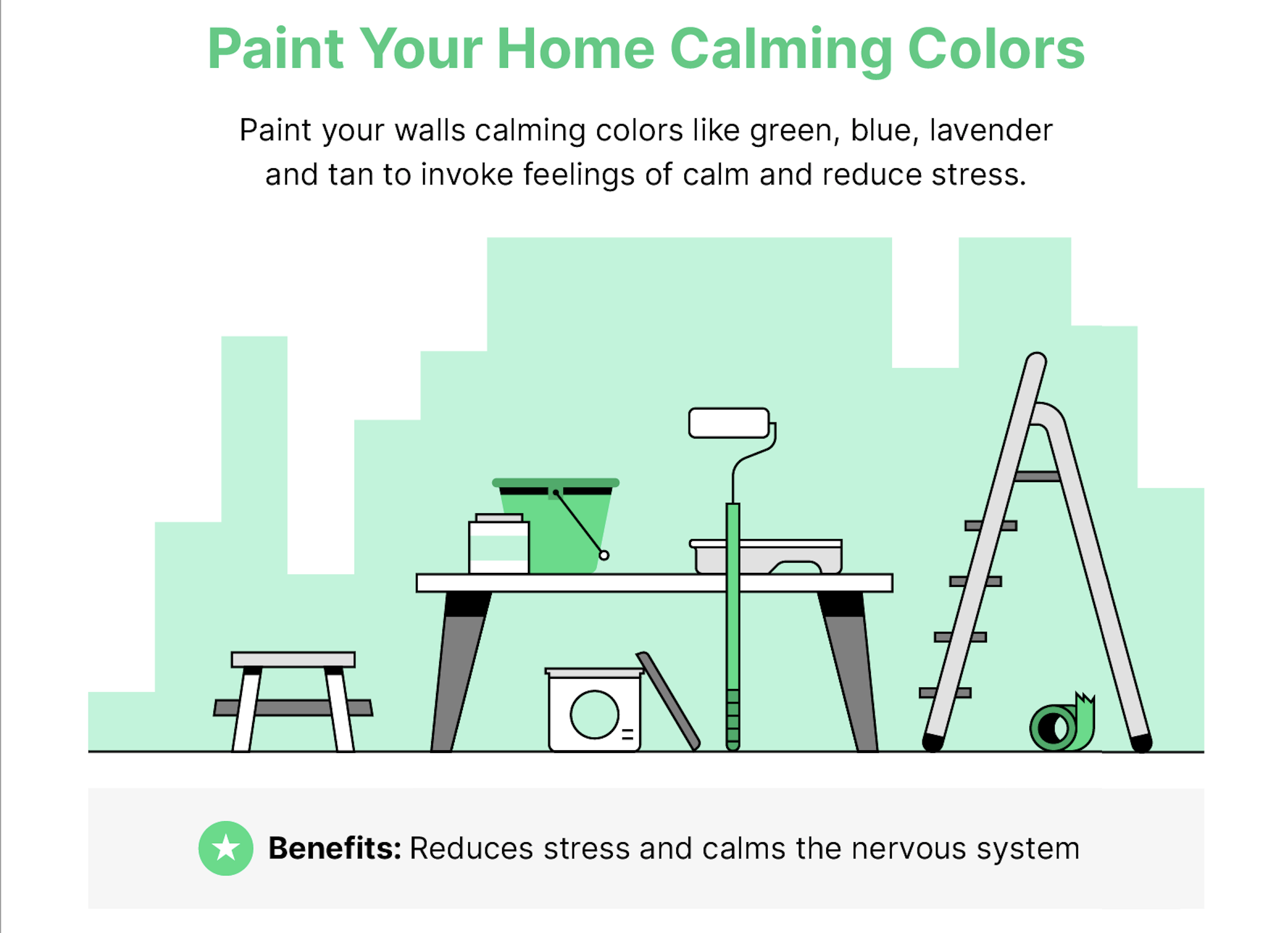
A straightforward way to completely overhaul how a room looks is by painting the walls.
So if you want a project to dig into this weekend, look no further than this simple update.
Color can significantly impact your mood, with colors such as blue, green, lavender and tan evoking a sense of calm.
But really, any color that speaks to you can create a more relaxing atmosphere in your home.
However, decor experts recommend staying away from red or any type of neon paint if you’re looking to decrease your anxiety levels, as they can make a room feel too stimulating.
2. Decorate with plants
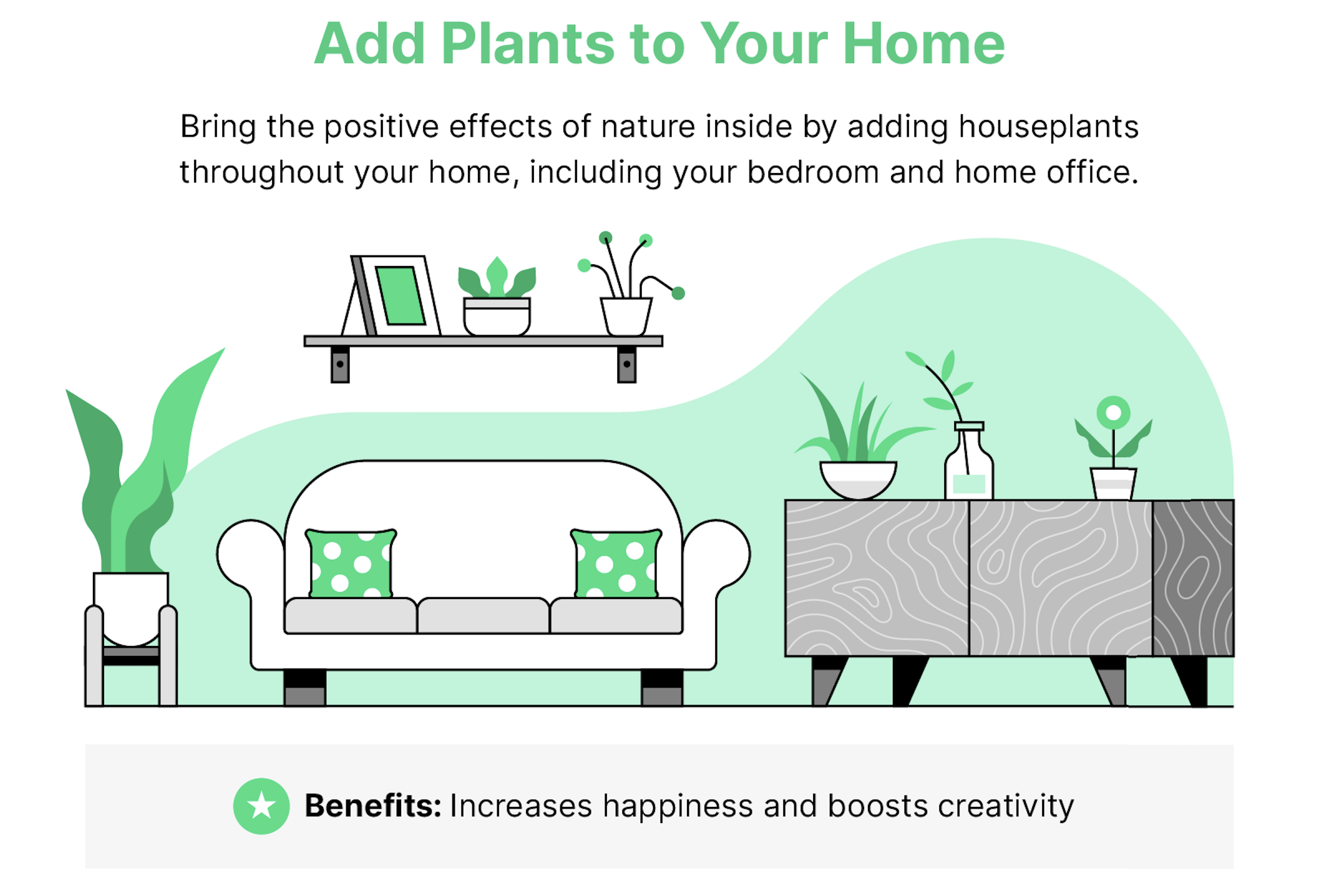
Spending time in nature can spur a variety of mental health benefits.
According to Greater Good Magazine, nature has been proven to reduce stress levels, make you happier, reduce fatigue and help you be more creative.
But depending on your living situation and lifestyle, going for a hike every day may not be in the cards.
To help ensure you can take advantage of all these benefits, you’ll need to bring the outdoors in.
Houseplants such as ferns, succulents, ivy and spider plants are not only beautiful but easy to take care of too.
They help reduce toxins throughout your home and provide a sense of accomplishment the longer you keep them alive and thriving.
To make sure you reap the full benefits of houseplants, add a few to each room of your home, especially in areas prone to high stress, such as your home office.
You can also bring a few to your bedroom (hint: lavender and gardenia are perfect for this area) to help you unwind at the end of the day.
For more suggestions on how to implement green spaces throughout your home, check out our post on green spaces and your family.
3. Add in light therapy devices
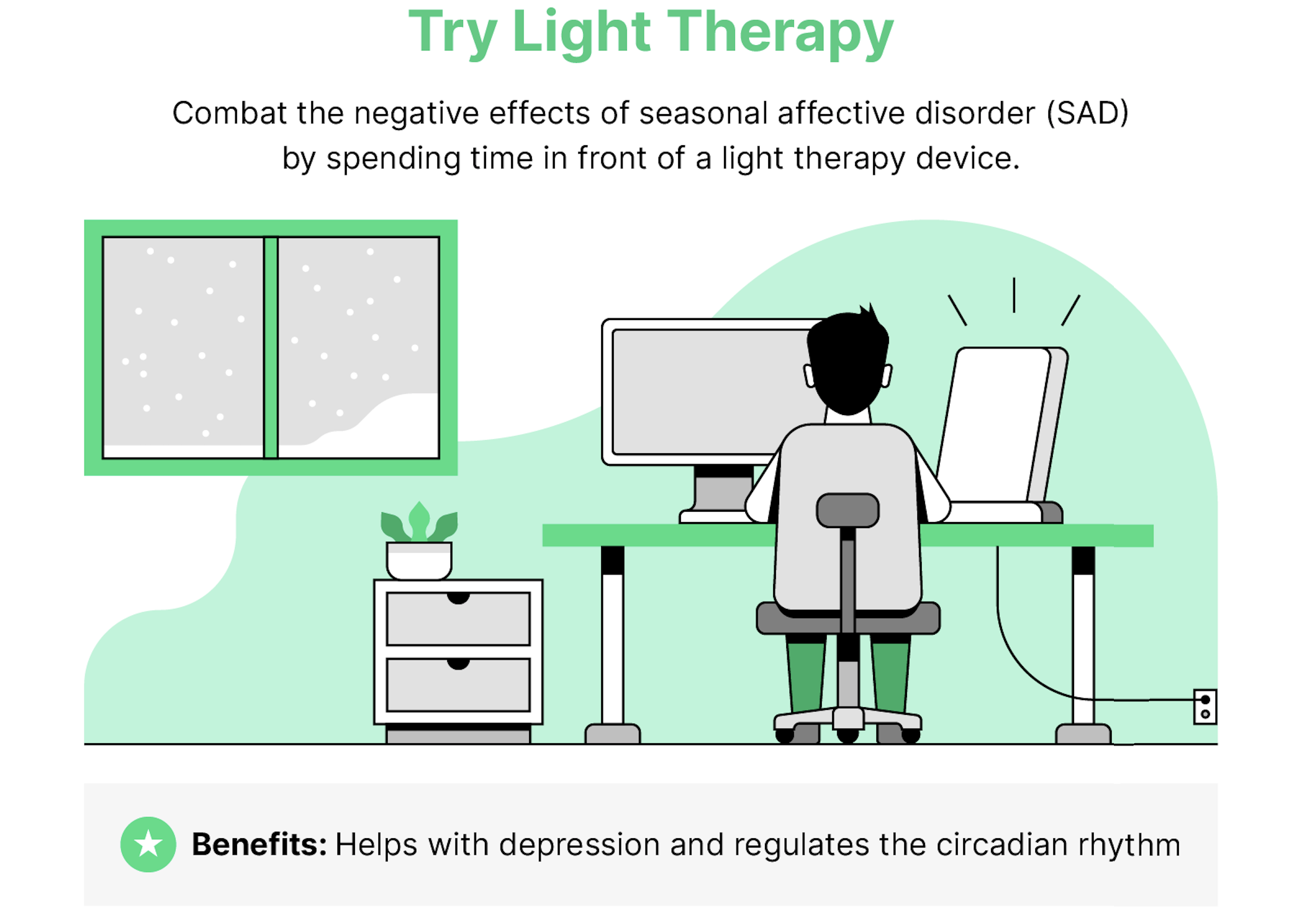
Ever heard of SAD, aka Seasonal Affective Disorder?
Even if you haven’t, chances are you might’ve experienced it at some point in your life.
It’s that depressing feeling you get during the winter when sunshine is scarce, and the weather makes spending time outdoors a lot less pleasurable.
This can lead to not only a vitamin D deficiency, but also feelings of depression and anxiety.
Add a global pandemic to the mix, and SAD has likely impacted many more people than usual this past year.
Luckily, science has our back in combating this mood disorder.
Light therapy devices mimic the sun’s natural schedule and provide a similar wavelength to stimulate your brain.
They come in several forms: a night light, desk lamp, flashlight and even a face mask.
It’s recommended to spend at least 20 to 30 minutes in front of your light therapy device each morning, as it will help regulate your circadian rhythm and make it easier to fall asleep at night.
4. Implement soft geometry
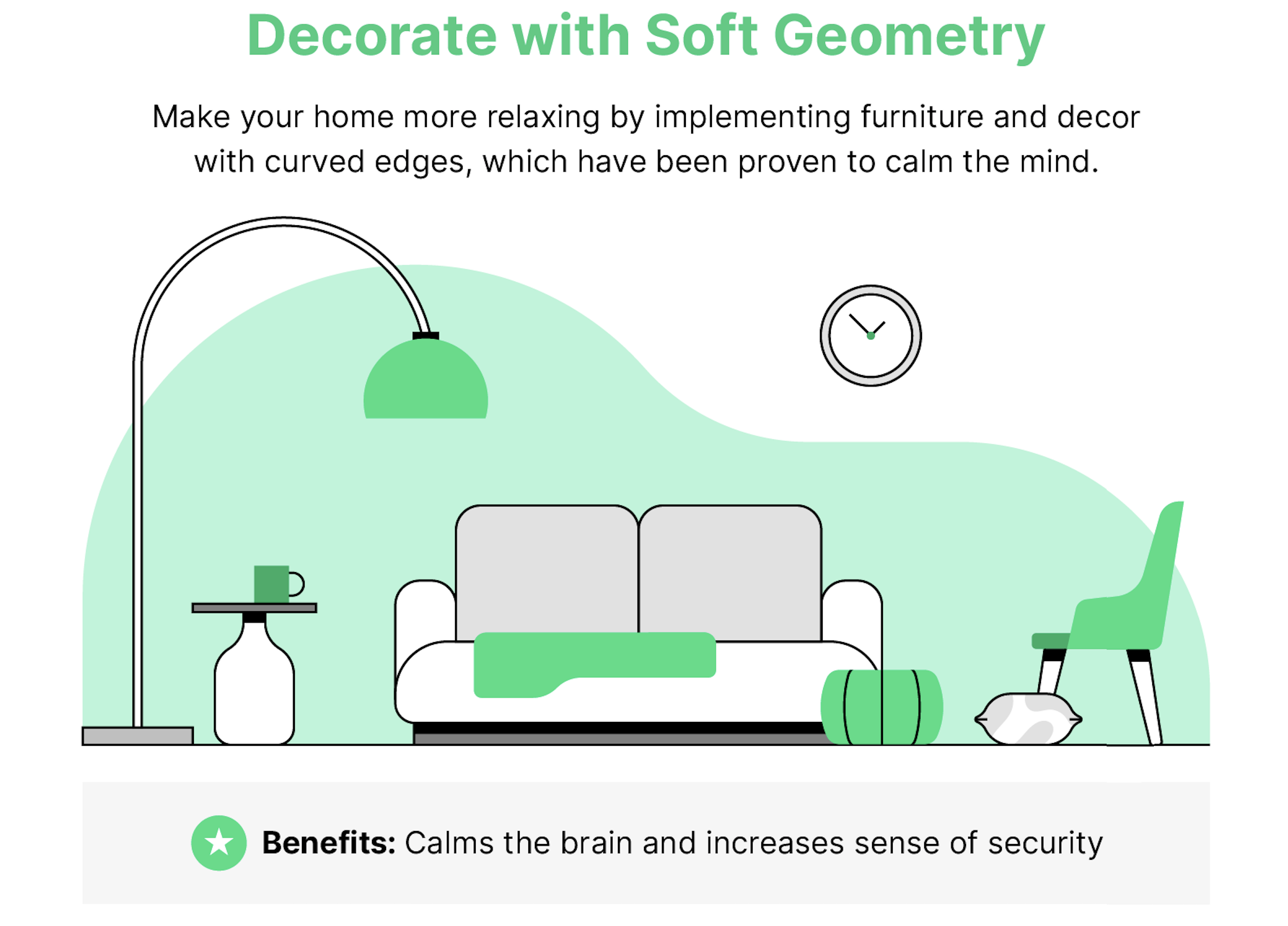
If you’re considering redecorating any room of your home, it’s important to look for pieces of furniture with soft geometry.
Rounded edges and curvy lines are not only beautiful to look at, but they also have a calming effect on the brain.
Soft geometry gives us a sense of safety and can be an easy thing to spot when shopping for new furniture.
Look for couches with rounded armrests and chairs with circular backs to create a more calming home.
For more budget-friendly updates, try incorporating oval picture frames, circular wall hangings and round pillows when decorating your space.
5. Set up a sacred space
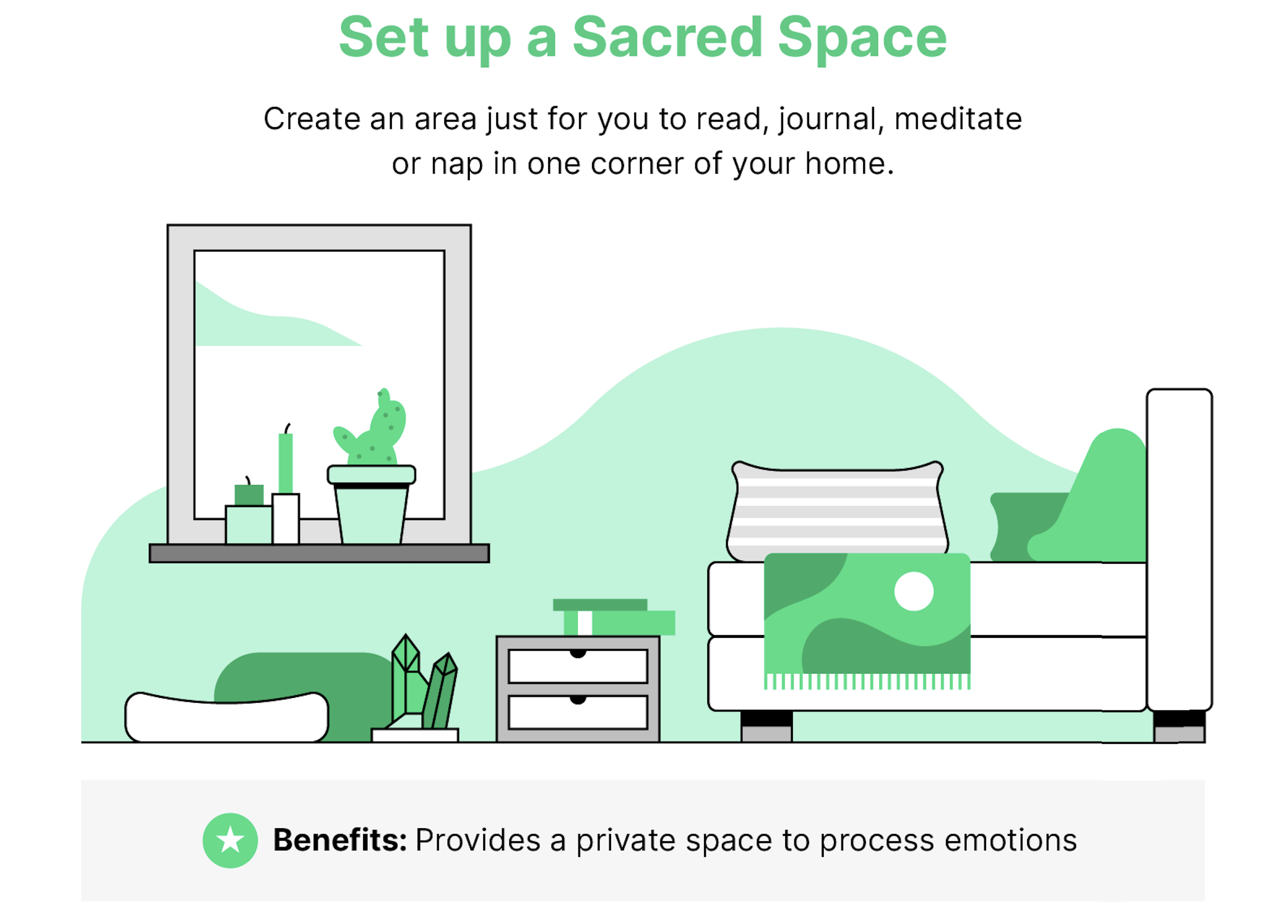
Everyone needs a section of their home they can turn to when they’re stressed, where they can instantly feel at peace.
Taking the time to create this sacred space in your home (if you haven’t already) can greatly impact your mental health.
To create a space that’s uniquely yours, make sure to surround yourself with things that bring you joy and comfort.
You can use this space to meditate, read, journal, nap or whatever else your heart desires.
Not sure where to start? Trying adding some of these items to your private oasis and see how it makes you feel:
- Blankets
- Books
- Candles
- Cushions
- Figurines
- Hand warmers
- Musical instruments
- Noise-canceling headphones
- Plants
- Salt rock lamps
- Snacks
6. Try aromatherapy
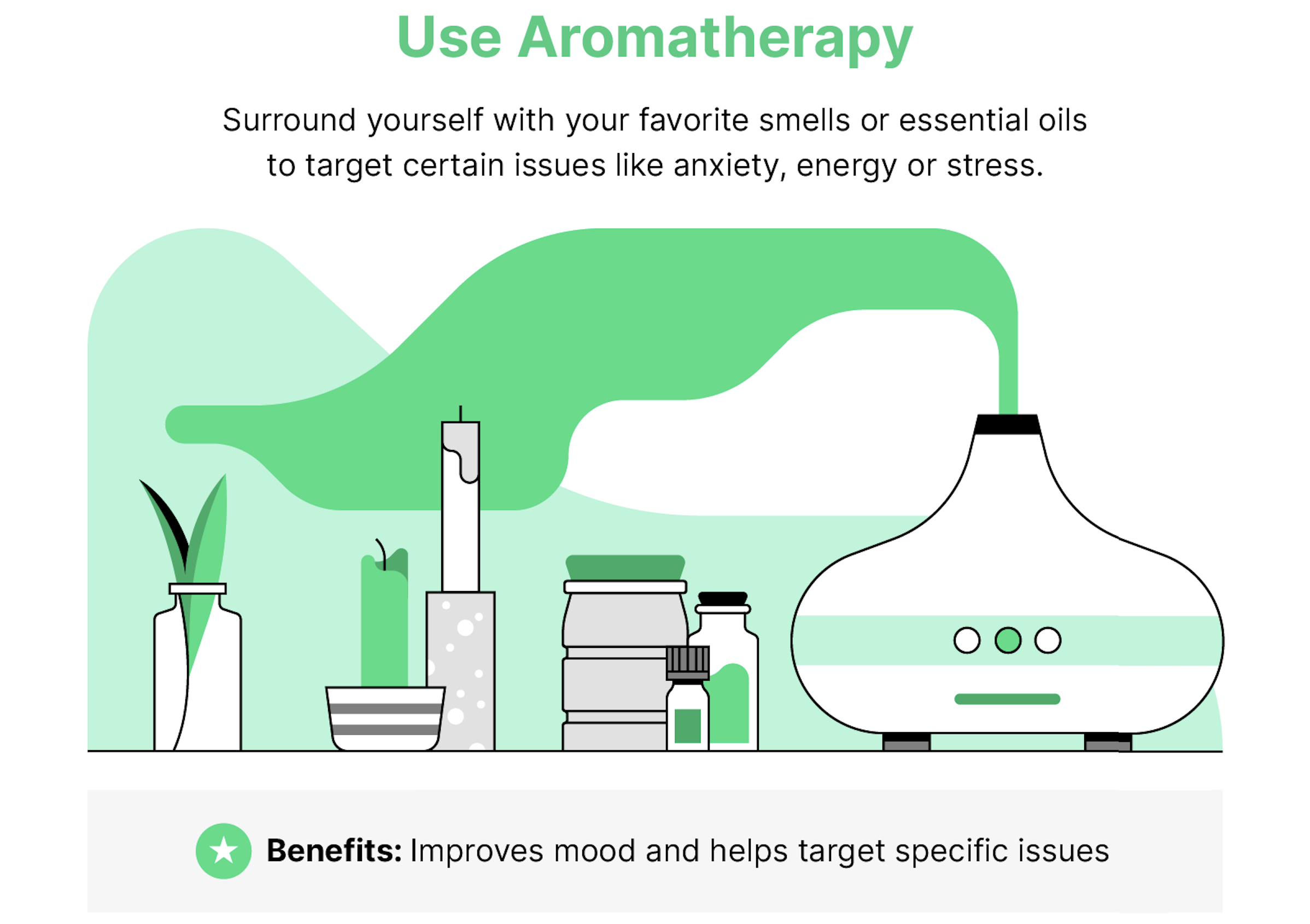
Aromatherapy, or the act of using scents for therapeutic effects, can be a great way to quickly calm the mind and body.
You likely have a lot of strong memories tied to scents, whether it’s the fragrance of your grandmother’s perfume or the smell of freshly baked cookies wafting through the house during Christmas.
You can recreate these memories by using similar scents in times of stress, either with an essential oil diffuser, a candle or scented body products.
Some of the most well-known scents for effective aromatherapy include lavender for relaxation, peppermint for focus, lemon to boost your mood, eucalyptus for energizing and patchouli to combat depression.
7. Create a home gym
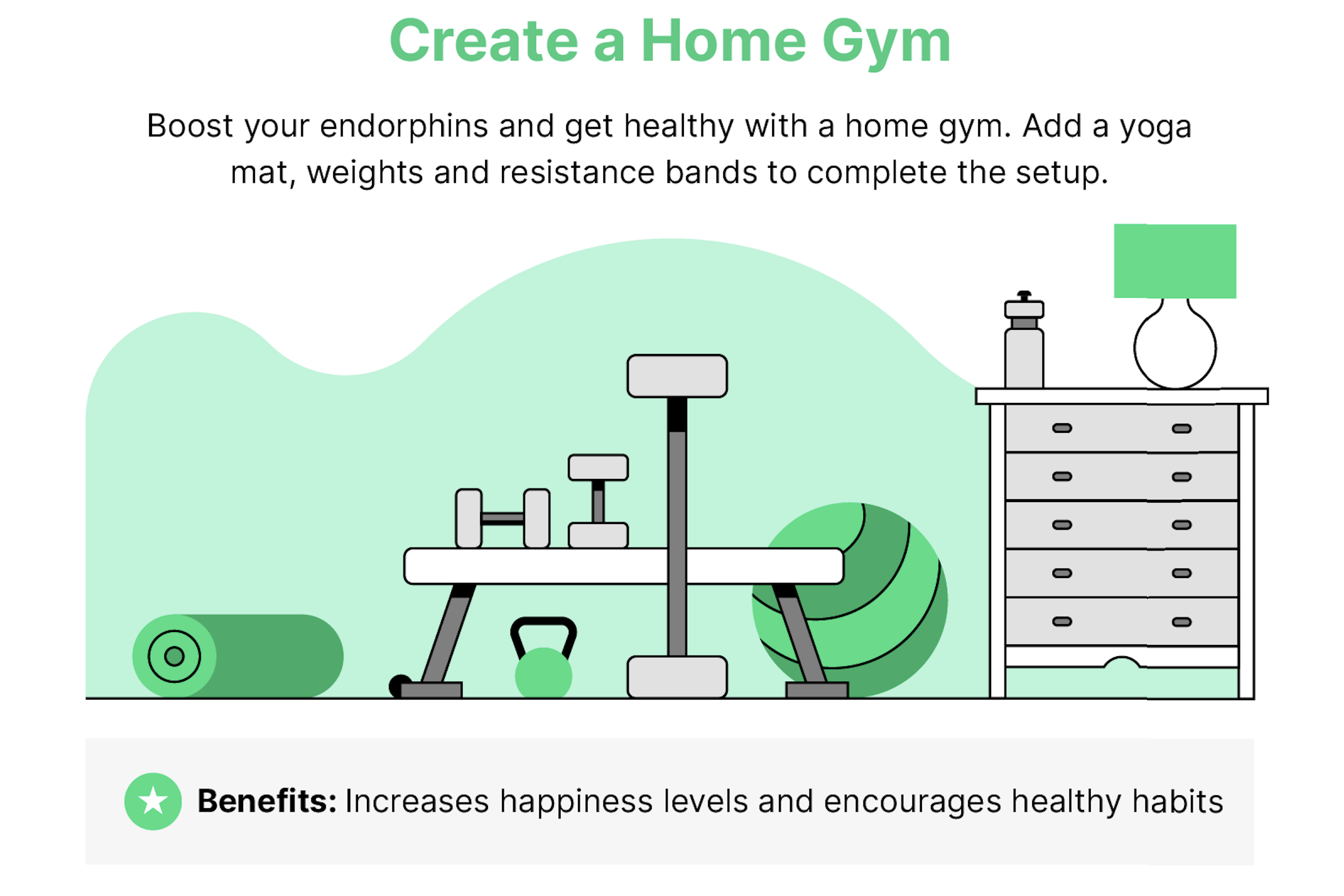
If you’ve ever watched “Legally Blonde,” you know that “Exercise gives you endorphins. Endorphins make you happy.”
While Elle Woods used this as a defense for her client, that doesn’t mean actually exercising is a simple feat.
This is especially true given that so many gyms across the country are closed due to the pandemic.
You can give yourself an endorphin boost by creating a home gym focused on the activities you enjoy the most.
If you love yoga, set up a space big enough for your mat, and surround yourself with props and incense.
If you prefer more high-intensity workouts, invest in a few weights and workout bands instead of fancy gym equipment.
And you don’t have to go it alone.
There are plenty of free exercise videos online for every interest, and you can bring your family into the mix to make working out even more fun.
8. Organize to make cleaning a breeze
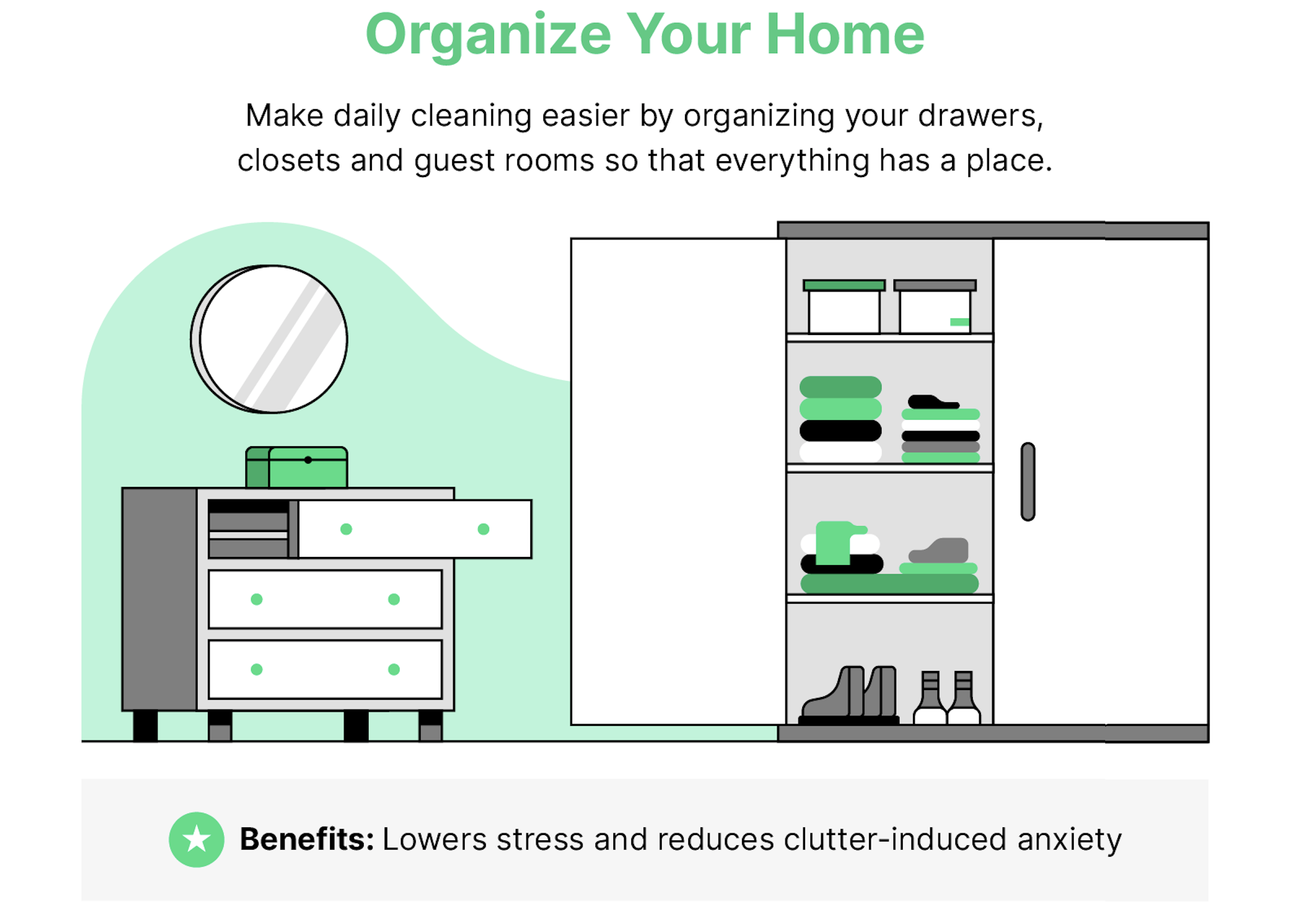
You know a clean and organized home helps improve anxiety, depression and stress.
But getting (and keeping) everything clean is hard work.
One way to make consistent cleanliness a bit easier is by organizing and simplifying your home.
By making sure that everything has a place, you’ll be able to put things away and find items quickly, reducing your home’s overall clutter.
You can even buy storage bins, stacked pantry shelves and other organization supplies to help in your efforts.
To get started, try one of the many home inventory or spring cleaning apps out there to walk you through every step of the process.

Other ways to improve your mental health at home
If you’re looking to add even more beneficial habits to your daily routine, there are plenty of things you can do to boost your mental health that won’t cost a thing.
Try out the following and implement a few of your favorites into your day-to-day life.
- Color
- Cook your favorite meal
- Create a bedtime ritual
- Develop a self-care routine
- Get more sleep
- Journal about your feelings
- Meditate for five minutes every morning
- Read
- Take a bubble bath
- Take your pet for a walk or play with them inside
- Turn on your favorite song and dance
Taking control of your mental health is hard work, and it takes time.
But by changing your environment, you can give yourself the boost you need to tackle your mental health head-on.
If you do end up taking on bigger home improvement projects in the name of mental health, make sure to let your insurance provider know.
That way, you can get the full value of your newly improved home should something happen to its structure.
This article was originally published at Hippo.com on March 8th, 2021



